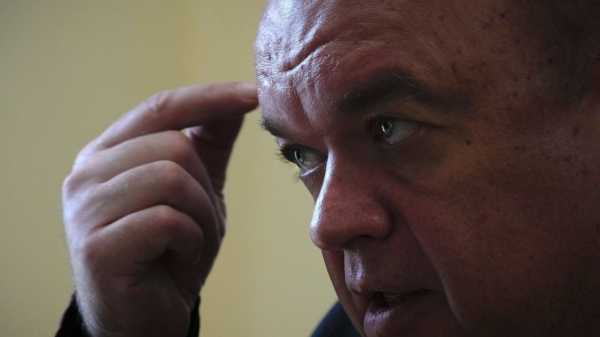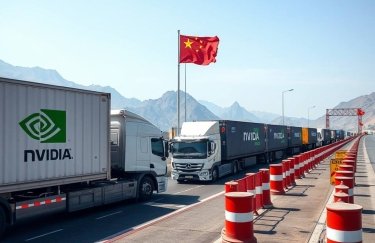
KYIV, Ukraine — Ukraine is considering restarting Europe’s largest nuclear plant to ensure its safety just weeks after fears of a radiation disaster at the Russian-occupied facility, the president of the company that operates the plant said Tuesday.
The Zaporizhzhia Nuclear Power Plant has emerged as one of the most worrying flashpoints of Russia’s invasion of Ukraine. It has been damaged in fighting, prompting international alarm, and its head was detained by occupying forces through the weekend before his release Monday.
Ukrainian state nuclear company Energoatom shut down the last of the plant’s six reactors on Sept. 11 because Russian military activity had cut reliable external power supplies for cooling and other safety systems, threatening a potentially catastrophic meltdown.
But now the company faces a different problem.
In an interview with The Associated Press, Energoatom President Petro Kotin said the company could restart two of the reactors in a matter of days to protect safety installations as winter approaches and temperatures drop.
“If you have low temperature, you will just freeze everything inside. The safety equipment will be damaged,” he said in his office at the company’s Kyiv headquarters. “So you need heating and the only heating is going to come from the working reactor.”
The plant’s last operational reactor was placed into what is known as “cold shutdown” last month, reducing the likelihood of a dangerous meltdown.
But there is still a risk as long as there are nuclear fuel assemblies inside, Kotin explained. Intentional damage to the reactors or the safety and cooling equipment, or a failure of those systems due to cold temperatures, could still lead to disaster.
“You have residual heat and you should constantly provide the coolant for these fuel assemblies. If you stop cooling, then you will have meltdown. And that is how it works,” he said.
Russian troops occupy the plant and the surrounding area, including the nearby city of Enerhodar, while thousands of Ukrainian workers continue to maintain the facility. The plant is the city's only source of heat, Kotin said.
Energoatom could make a decision as early as Wednesday to restart the reactors.
“We, at the moment, are evaluating all the risks. And this depends on the weather. And actually, we don’t have much time to do that,” Kotin said.
At the time of the forced shutdown, Ukrainian officials warned it was only a stopgap measure and, as such, unreliable.
Steven Arndt, president of the American Nuclear Society, said U.S. power plants often use heaters to prevent equipment, particularly refueling water storage tanks, from freezing. He did not have enough information to say whether restarting reactors at the Zaporizhzhia plant was necessary.
“Those heaters run on electricity, which need not come from the reactors, if the plant has a grid connection or backup generators in lieu of off-site power supplies,” Arndt said by email.
The power plant sits within one of four Ukrainian regions that Russia has illegally claimed as its territory. The plant’s director general, Ihor Murashov, was seized and blindfolded by Russian forces on his way home from work on Friday, hours after Russian President Vladimir Putin signed treaties to annex the areas.
Murashov reported that he did not experience beatings or other abuse, but he was forced to make false statements on camera before his release, according to Kotin.
“I would say it was mental torture," Kotin said of the baseless false confessions. “He had (to) say that all the shelling on the Zaporizhzhia Nuclear Power Plant was made by Ukrainian forces, and that he is a Ukrainian spy and he is in contact with Ukrainian special forces.”
Murashov was eventually let go at a checkpoint at the edge of territory Russia controls and had to walk about 15 kilometers (9 miles) across a no-man’s land to Ukrainian-held areas, according to Kotin.
Enerhodar Mayor Dmytro Orlov said he had since spoken with Murashov, who reported "he spent two days in solitary confinement in the basement, with handcuffs and a bag on his head. His condition can hardly be called normal.”
The International Atomic Energy Agency, the U.N.'s nuclear watchdog, said Tuesday that it “understands that Mr. Murashov is now with his family in territory controlled by Ukraine and will not be continuing with his duties at the ZNPP.”
“It is not yet clear who will replace him in this role,” the agency said.
The U.N. agency said its own director general, Rafael Mariano Grossi, plans to travel to Kyiv and then to Moscow this week to pursue an agreement on a “nuclear safety and security protection zone” around the Zaporizhzhia plant.
Russian forces occupied the nuclear power station, which ranks among the world’s biggest, early in the war. Both sides blame each other for shelling that has damaged power lines connecting it to the grid.
Kotin on Tuesday renewed his call for the establishment of a “demilitarized zone” around the plant, where two experts from the International Atomic Energy Agency are currently based.
———
Yuras Karmanau in Tallinn, Estonia, contributed reporting.
———
Follow AP’s coverage of the war in Ukraine at https://apnews.com/hub/russia-ukraine
Sourse: abcnews.go.com





